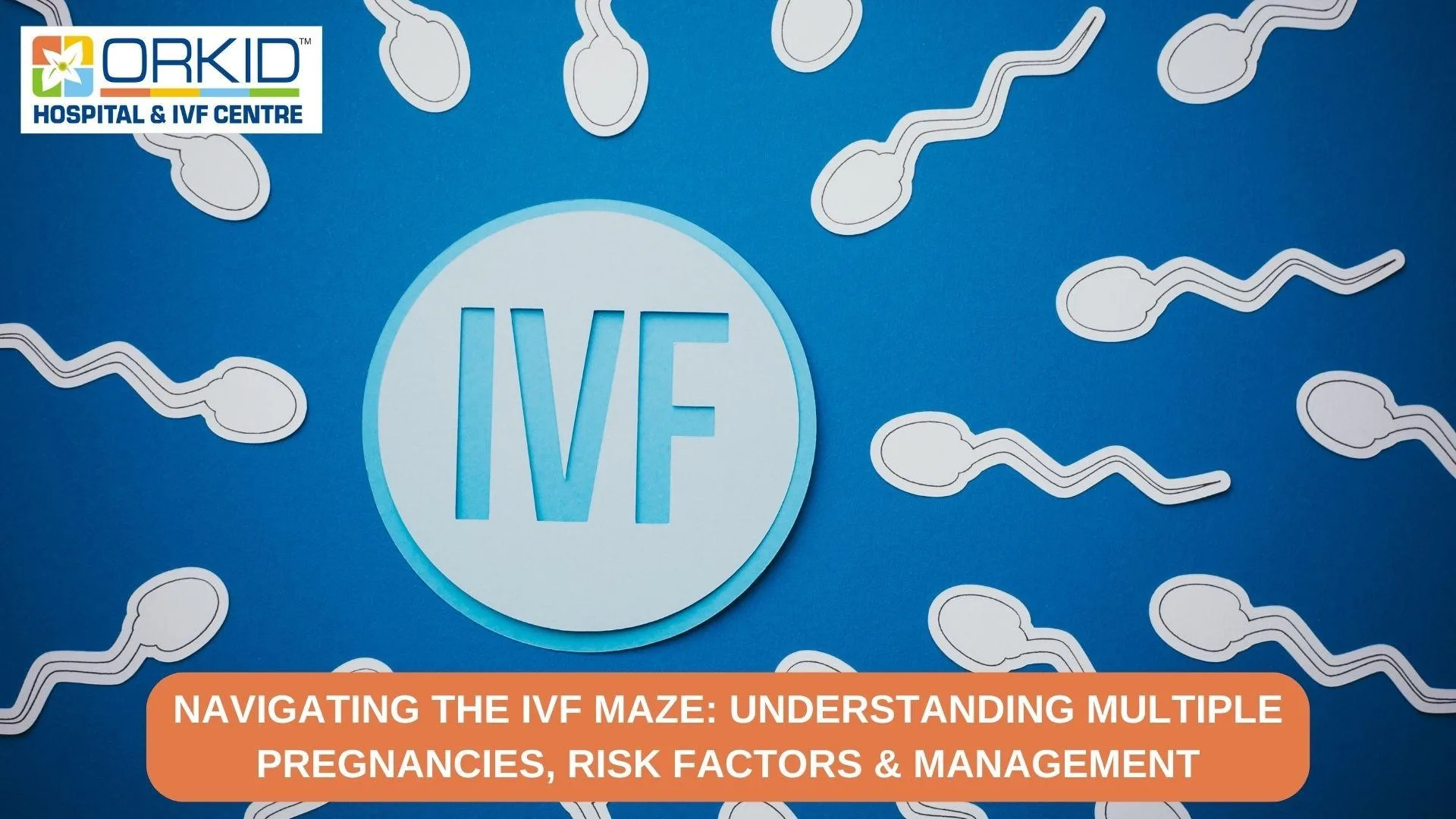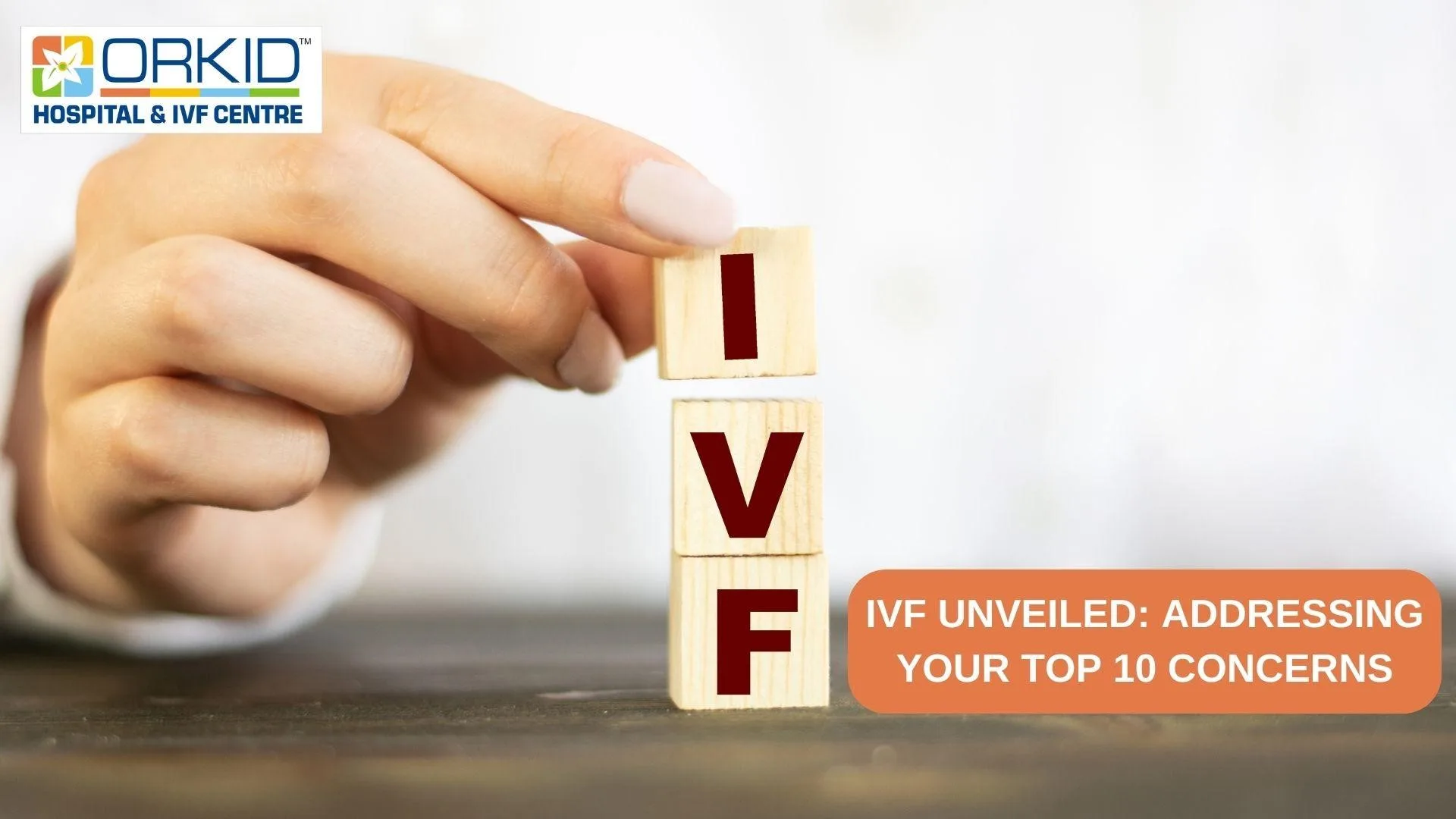In vitro fertilization (IVF) has revolutionized fertility treatments, offering hope to couples struggling to conceive. While the primary goal of IVF is to achieve a successful pregnancy, there is an inherent potential for multiple pregnancies. Our experts at Orkid Hospital, considered as one of the best infertility hospitals in Surat, have shared their knowledge about the complexities of multiple pregnancies following IVF, examining the risks involved, the factors to consider, and the management approaches that healthcare professionals may employ.
Understanding Multiple Pregnancies
Multiple pregnancies occur when more than one embryo implants and develops in the uterus. IVF, by its nature, involves the transfer of multiple embryos to enhance the chances of successful implantation. While this increases the likelihood of achieving a pregnancy, it also raises the potential for twins, triplets, or even higher-order multiples.
There are various factors influencing multiple pregnancies:
1. Number of Embryos Transferred: The most significant factor influencing the likelihood of a multiple pregnancy is the number of embryos transferred. While transferring multiple embryos increases the chance of at least one implanting successfully, it also raises the risk of multiple gestations. That’s why it is recommended to seek treatment from one of the best IVF centres in Surat at Orkid Hospital and IVF centre.
2. Maternal Age: Younger women tend to produce healthier embryos, leading to a higher likelihood of successful implantation. To balance this, healthcare providers may recommend transferring fewer embryos in younger patients to reduce the risk of multiple pregnancies.
3. Embryo Quality: High-quality embryos are more likely to implant successfully. In cases where several high-quality embryos are available, healthcare professionals may need to carefully consider the number to transfer to strike a balance between success rates and the risk of multiples.
4. Previous IVF Attempts: If a patient has undergone multiple IVF cycles without success, healthcare providers may consider transferring more embryos in subsequent cycles to improve the chances of a successful pregnancy. However, this decision must be made with caution to avoid an increased risk of multiples.
Risks Associated with Multiple Pregnancies
While the idea of conceiving twins or more may seem exciting, it’s essential to be aware of the potential risks associated with multiple pregnancies. According to the experts at Orkid Hospital and IVF centre, one of the best IVF hospital in Surat, these risks include:
1. Preterm Birth: Multiple pregnancies are at a significantly higher risk of preterm birth. Premature babies may face health complications and require extended stays in neonatal intensive care units (NICUs).
2. Low Birth Weight: Babies from multiple pregnancies are more likely to have a low birth weight, which can contribute to health challenges in the early stages of life.
3. Cesarean Section: The likelihood of needing a cesarean section is higher in multiple pregnancies due to the increased strain on the mother’s body and potential complications during delivery.
4. Gestational Diabetes and Hypertension: Mothers of multiples are at a higher risk of developing gestational diabetes and hypertension, posing health risks to both the mother and the unborn babies.
5. Neonatal Complications: Multiple pregnancies are associated with an increased risk of neonatal complications, including respiratory distress syndrome and developmental delays.
Management Approaches
Our healthcare providers take a personalized approach to minimize the risks associated with multiple pregnancies following IVF. Here are some common management followed by us at Orkid Hospital and IVF centre, the best test tube baby centres in Surat:
1. Elective Single Embryo Transfer (eSET): For younger patients with a favourable prognosis, healthcare professionals may recommend eSET to reduce the risk of multiples. This involves transferring a single high-quality embryo, optimizing the chance of a healthy, singleton pregnancy.
2. Selective Reduction: In cases where a higher-order multiple pregnancy poses significant risks to the health of both the mother and the babies, healthcare providers may discuss the option of selective reduction. This involves reducing the number of foetuses in the uterus to enhance the chances of a healthier outcome for the remaining ones.
3. Counselling and Informed Decision-Making: A crucial aspect of managing the potential for multiple pregnancies is thorough counselling. Healthcare providers should ensure that patients are well-informed about the risks and benefits of transferring multiple embryos, empowering them to make informed decisions aligned with their reproductive goals.
4. Monitoring and Early Intervention: Continuous monitoring during the pregnancy is essential for detecting and addressing any complications promptly. Early intervention can significantly improve outcomes for both the mother and the babies.
5. Preconception Planning: Before embarking on an IVF journey, healthcare providers should engage in preconception planning with patients. This involves discussing the potential for multiple pregnancies, assessing individual risk factors, and establishing a personalized plan that aligns with the patient’s goals and values.
Conclusion
While the potential for multiple pregnancies is inherent in the IVF process, it’s crucial to approach this aspect of fertility treatment with careful consideration and informed decision-making. By working closely with your healthcare providers, patients can optimize their chances of a successful pregnancy while minimizing the potential risks associated with conceiving multiples. We at Orkid Hospital & IVF Centre understand the profound emotions that accompany this journey of IVF and are honoured to stand by your side, offering unwavering support and guidance.



